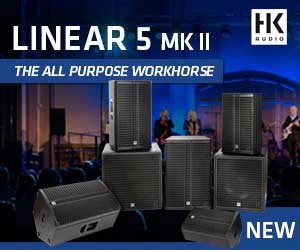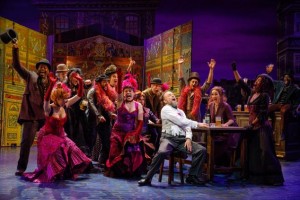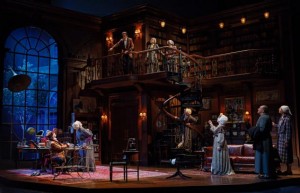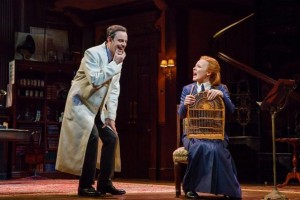Aktuelle News & Schlagzeilen
TiMax spatial sound design for Broadway’s “My Fair Lady”
Marc Salzberg was introduced to TiMax spatial reinforcement whilst working as the production soundman on Broadway’s revival of “The King and I” at the Vivian Beaumont Theater. Later, with the same sound team of designer Scott Lehrer and his associate Alex Neumann, he explored TiMax further on the Broadway Theater’s revival of “Fiddler on the Roof”. When Salzberg was asked to create the sound design for “My Fair Lady” back at Broadway’s Lincoln Center, he chose the TiMax platform again.
His sound design divides the stage into 14 different zones, with TiMax spatial Image Definition objects created to allow any console mic or group to be imaged to and morphed between each zone. Control of the audio begins with a DigiCo SD7, connecting 42 inputs to TiMax SoundHub which then sends 56 outputs to the loudspeakers.
A combination of mainly D&B loudspeakers provides the bulk of the reinforcement. Six V7s form the backbone of the main ring, and a further two left and right of the proscenium, alongside a V10P and two Meyer UMS boxes. Eleven E5s fill in the front area, whilst a total of thirty E0s supported by two E12s manage the surround soundscape. The front and rear balcony areas receive TiMax-matrixed audio from six Q7s and 10 E0s respectively.
In addition to the main TiMax zone images, the orchestra pit uses a further six delay zones which enable the audience to sense where the instruments are located. Six D&B Q7s provide rear orchestra delays. One of the reasons the extra delays are necessary is down to the fact that at the beginning of Act II the band is revealed on stage, on a moving platform.
As the band platform moves, TiMax transparently changes the required delays and the audience continues to localise the sound to the platform. At the end of the Embassy Ball that opens Act II, the band platform moves upstage. Thirty seconds later, a song starts, and the band is once again in the pit. With a switch to a new scene in TiMax the audience is fooled into hearing the orchestra from the original pit position.
TiMax is also used on “My Fair Lady” for some more discreet immersive energy shifts, such as extending the end of several musical numbers into the audience. Salzberg observes that due to the TiMax software. Some of the show’s cues required over 200 delay times to change over 15 seconds.
(Photos: Joan Marcus)
SCHLAGZEILEN
news archiv
suche
© 1999 - 2024 Entertainment Technology Press Limited News Stories










